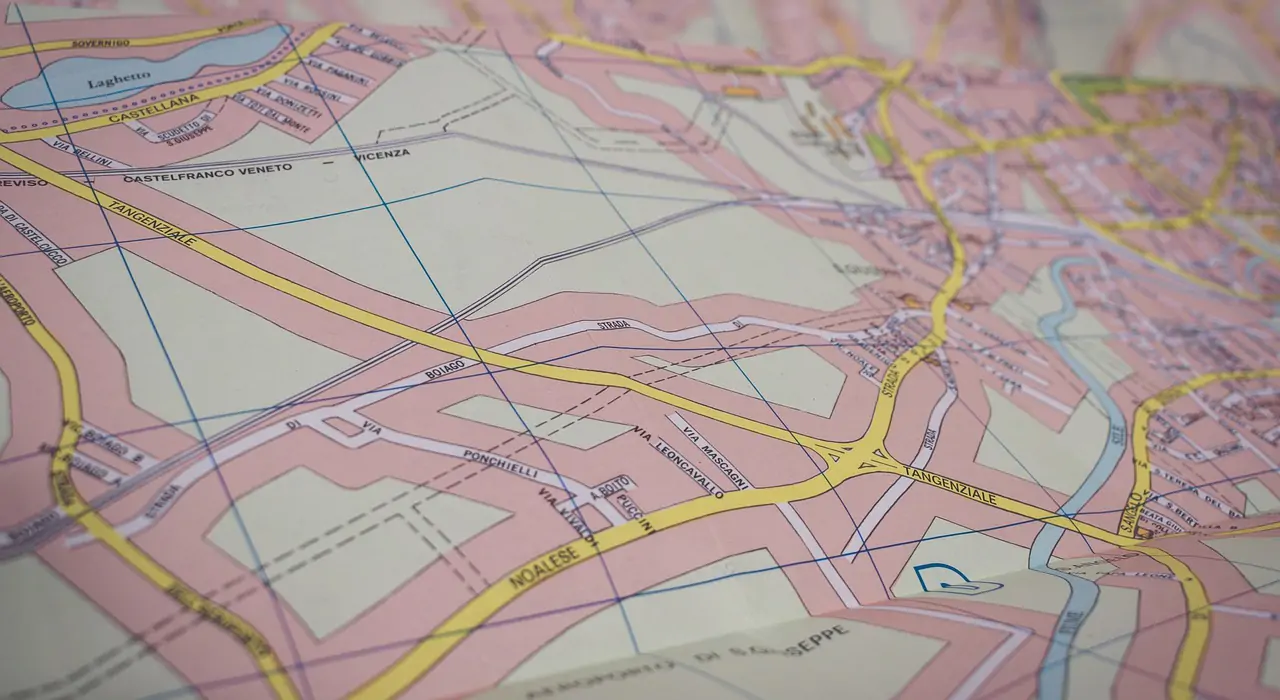Today, we will examine another map from IELTS Test 13, Section 1. Many of the collocations used in this map are familiar to us, simple and clear, allowing you to review them and gain more confidence in using them. Additionally, you will also learn some verbs and verb phrases that represent locations, which we will discuss in a dedicated article in the future.
An Example from IELTS 13 Test 1 Section 2
Below is the map accompanied by its associated listening script (original audio file):

OK, so this slide shows a map of the central area of Granford, with the High Street (1) in the middle and School Road (2) on the right. Now, we already have a set of traffic lights in the High Street (3) at the junction with Station Road, but we’re planning to have another set (4) at the other end, at the School Road junction, to regulate the flow of traffic (5) along the High Street.
We’ve decided we definitely need a pedestrian crossing. We considered putting this (6) on School Road, just (7) outside the school, but in the end we decided that could lead to a lot of traffic congestion, so we decided to locate it (8) in front of the supermarket. That’s a very busy area, so it should help things there.
We’re proposing some changes to parking. At present, parking isn’t allowed outside the library, but we’re going to change that, and allow parking there, but not (9) near School Road. There’ll be a new ‘No Parking’ sign (10) by the entrance to the school, forbidding parking for 25 metres. This should improve visibility for drivers and pedestrians, especially (11) on the bend just to the north of the school. As far as disabled drivers are concerned, at present, they have parking outside the supermarket, but lorries also use those spaces, so we’ve got two new disabled parking spaces (12) on the side road up towards the bank. It’s not ideal, but probably better than the present arrangement.
We also plan to widen the pavement on School Road. We think we can manage to get an extra half-metre on the bend just before you get to the school, (13) on the same side of the road.
Key Collocations for Directions
| # | Collocation | Explanation |
|---|---|---|
| 1 | in the middle | Indicates a central location within an area. |
| 2 | on the right | Describes a position that is to the right side of something. |
| 3 | at the junction with | Refers to an intersection between two roads. |
| 4 | at the other end | Indicates the opposite end of a street or area. |
| 5 | along the High Street | Refers to movement or regulation occurring throughout a road. |
| 6 | on School Road | Specifies a location along a particular street. |
| 7 | outside the school | Describes a position directly in front of a building. |
| 8 | in front of the supermarket | Indicates a specific area located directly before a store. |
| 9 | near School Road | Describes a location that is close to a specific road. |
| 10 | by the entrance to the school | Indicates a position right at the entrance of a building. |
| 11 | on the bend just to the north of the school | Refers to a curved section of a road located north of a reference point. |
| 12 | on the side road up towards the bank | Describes a secondary road that leads towards a specific destination. |
| 13 | on the same side of the road | Specifies the side of the road relative to another reference point. |
